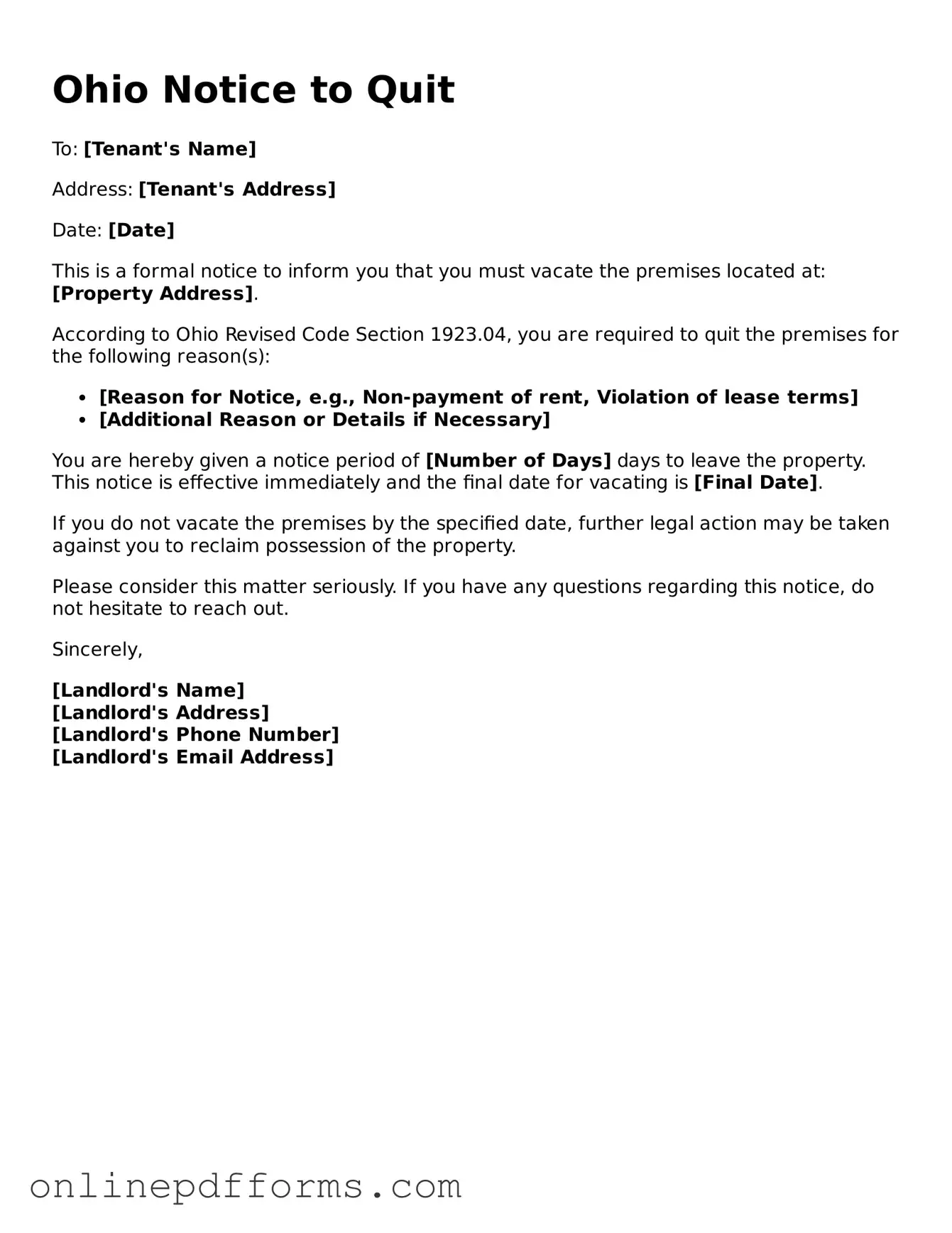The Ohio Notice to Quit form is similar to the Eviction Notice, often used in many states. An Eviction Notice formally informs a tenant that they must vacate the property, typically due to lease violations or non-payment of rent. Like the Notice to Quit, it outlines the reasons for eviction and provides a specific timeframe for the tenant to leave. Both documents serve as a precursor to legal action, ensuring that tenants are aware of their situation before further steps are taken.
Another document akin to the Ohio Notice to Quit is the Lease Termination Notice. This notice is issued when a landlord or tenant decides to end a lease agreement. It includes details such as the termination date and any obligations that need to be fulfilled before moving out. Similar to the Notice to Quit, it provides clarity and formal communication regarding the end of the tenancy, helping to avoid misunderstandings.
The Pay or Quit Notice is also comparable to the Ohio Notice to Quit. This notice is specifically for situations where a tenant has failed to pay rent. It demands that the tenant either pay the overdue rent or vacate the property within a certain period. Both documents serve to inform the tenant of their obligations and the consequences of non-compliance, establishing a clear timeline for action.
The Cure or Quit Notice shares similarities with the Ohio Notice to Quit as well. This document is issued when a tenant violates a term of their lease agreement. It allows the tenant a chance to remedy the situation, such as fixing a lease violation, or face eviction. The Notice to Quit may also provide an opportunity to correct issues, making both documents essential tools for landlords in managing tenant behavior.
The Three-Day Notice to Quit is another relevant document. Commonly used in various states, this notice gives tenants three days to vacate the property, often for reasons like non-payment of rent. It is straightforward and urgent, similar to the Ohio Notice to Quit, which also emphasizes the need for prompt action from the tenant.
The 30-Day Notice to Vacate is yet another document that parallels the Ohio Notice to Quit. This notice is typically used when a landlord wants a tenant to leave at the end of a lease term or for month-to-month rentals. It provides a longer notice period, allowing tenants more time to find new housing, similar to how the Notice to Quit informs tenants about the need to vacate in a structured manner.
For those interested in estate planning, understanding the intricacies of the Last Will and Testament paperwork is vital. This document not only allows individuals to specify their wishes regarding asset distribution but also ensures that their legacy is honored and managed per their desires.
The Notice of Non-Renewal is also comparable to the Ohio Notice to Quit. This document is used when a landlord decides not to renew a lease agreement. It informs the tenant that their lease will end and they must vacate the premises. Both documents serve to communicate important changes regarding the tenant's living situation, ensuring that tenants are aware of their responsibilities.
Lastly, the Demand for Possession is similar to the Ohio Notice to Quit. This legal document is used when a landlord formally requests that a tenant vacate the property, often after previous notices have been ignored. It serves as a final warning before legal action is pursued, much like the Notice to Quit, which aims to resolve issues before escalating to eviction proceedings.
